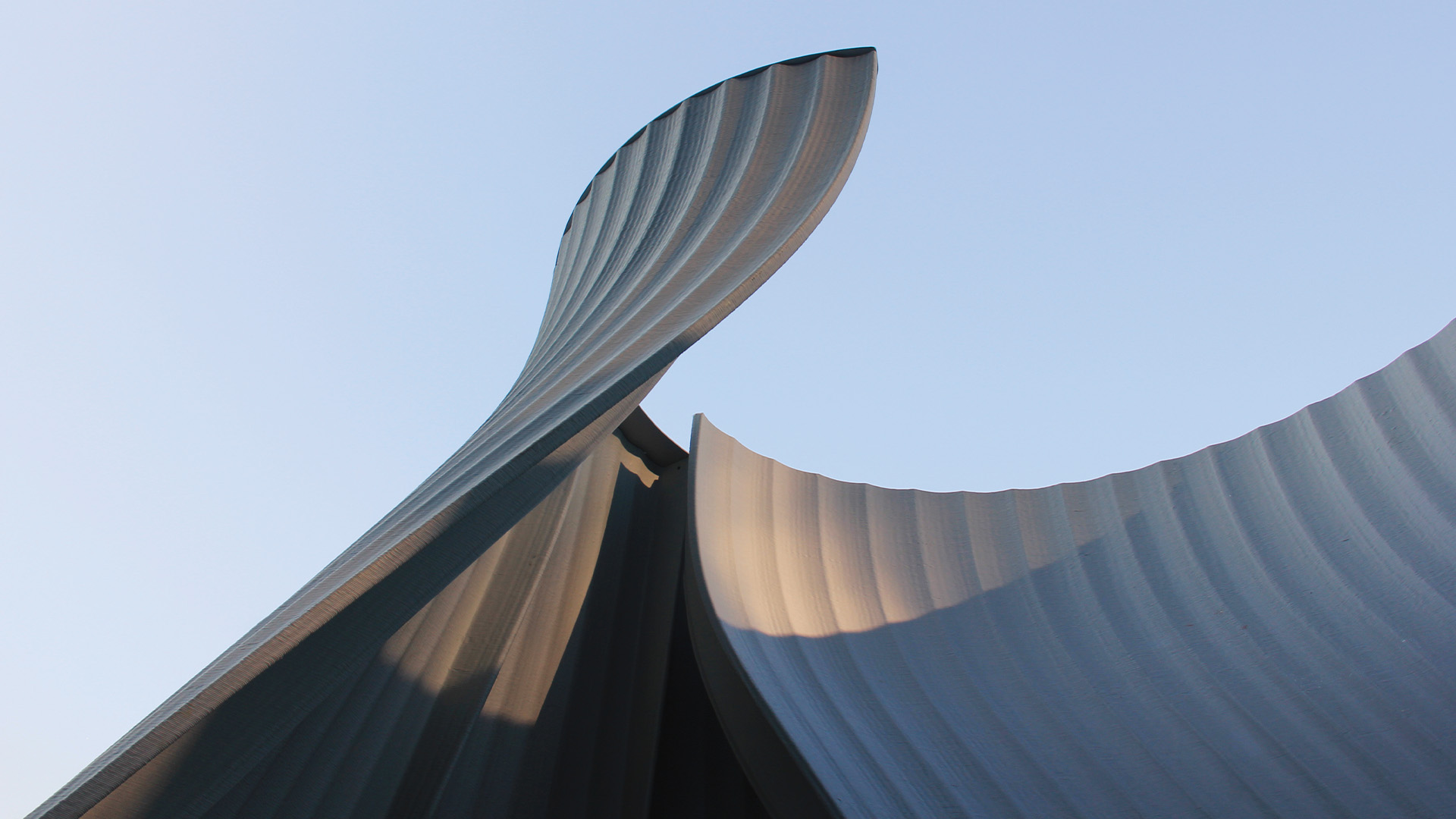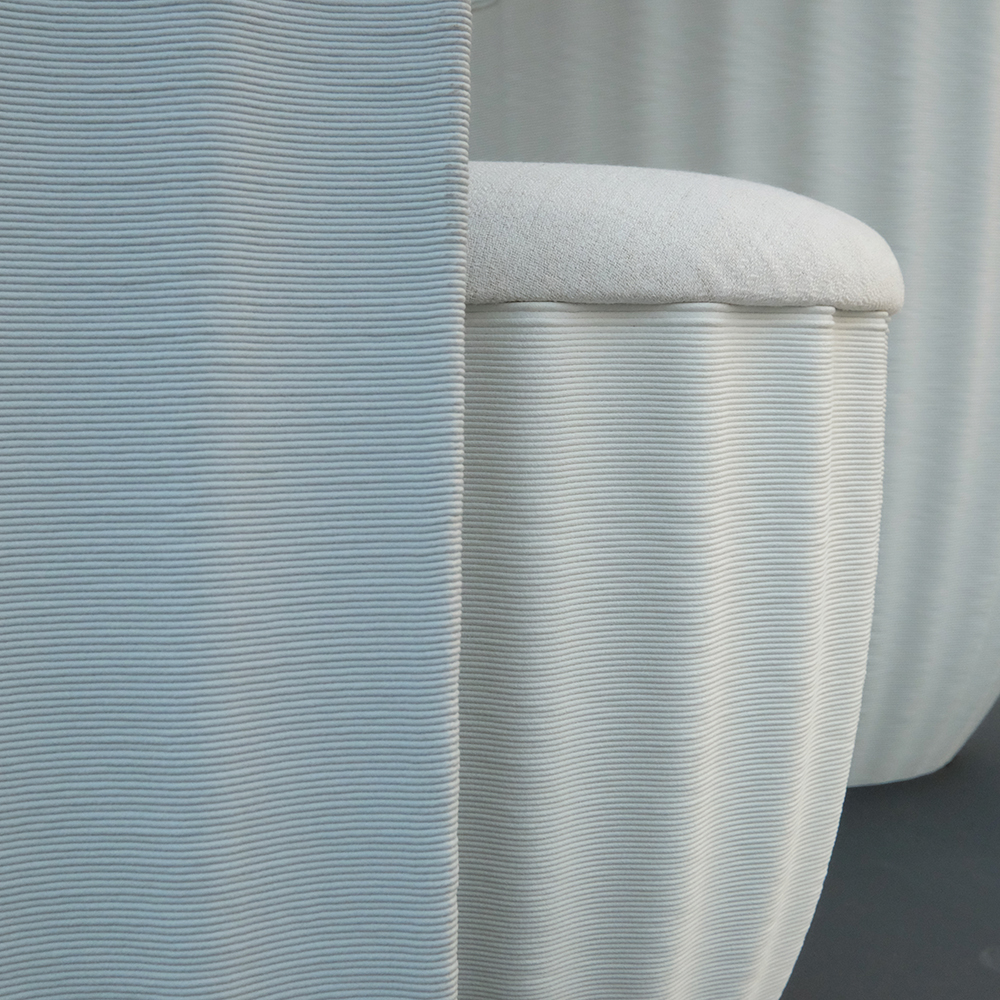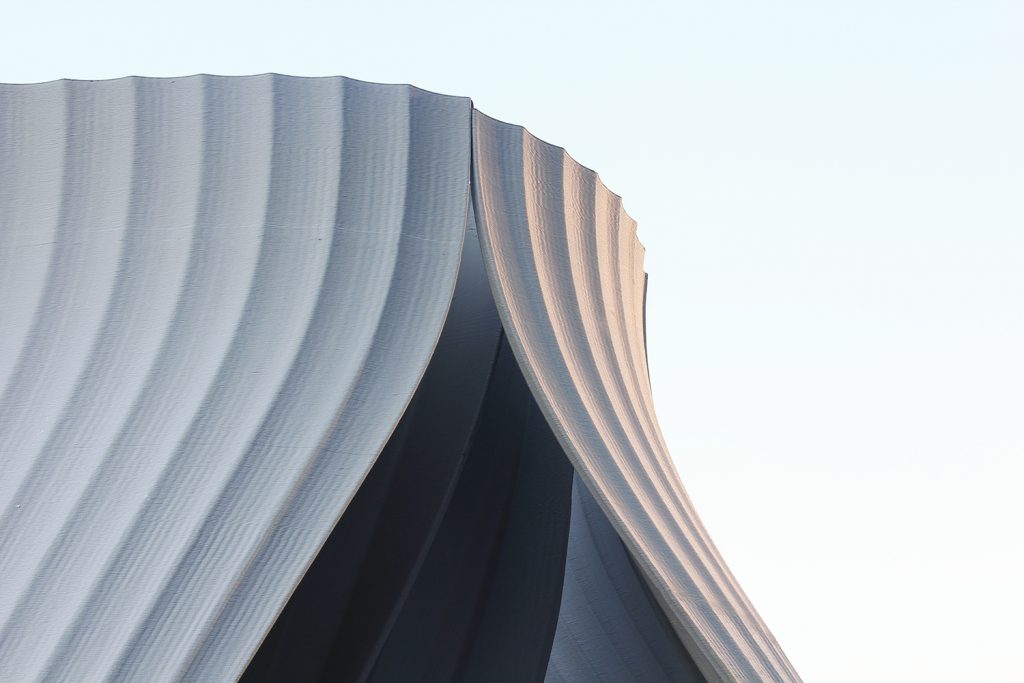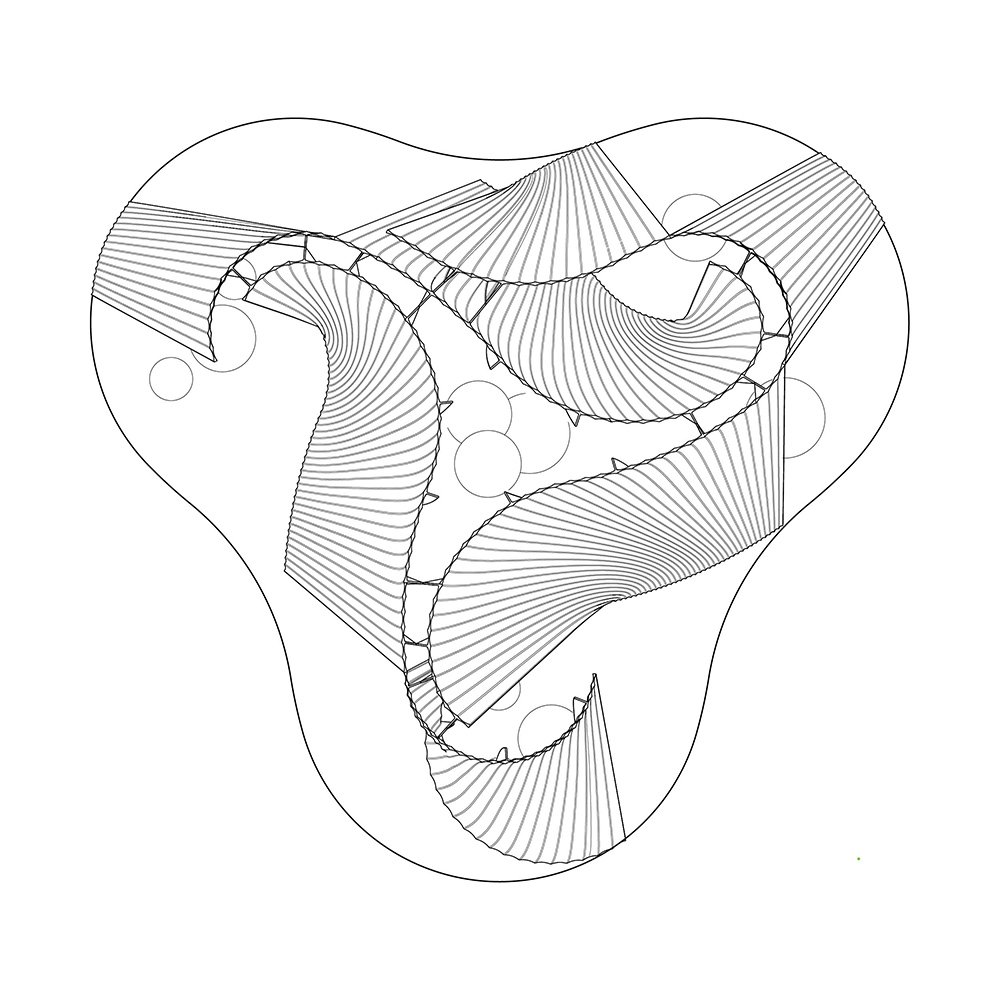Copyright © 2025 Motivate Media Group. All rights reserved.
The North Star Pavilion explores additive manufacturing and recycling technologies in architecture
Nyxo studio unveiled The North Star pavilion at Dubai Design Week 2023

Nyxo studio recently presented The North Star pavilion, a 3D-printed structure designed as an exhibition space for startup incubator In5 to showcase the work of its companies, and to be used as a meeting space. The pavilion was showcased for the first time at Dubai Design Week 2023 and will serve future events for 2024.

The architecture
The four souls of In5 – media, technology, design and science – are represented by an infinite loop, generating four spaces that flow into each other. The loop organises the movements of a series of surfaces that meet and fold together, articulating the opening or enclosure of the spaces. The S-shaped surfaces create fluid flows between the outdoor and the indoor spaces, defining pointed arches as an homage to the ogee arches of Islamic architecture.
The surfaces are characterised by a fluted pattern that emphasises their geometry, interpolating sections of different sizes and shapes. The interior side of the walls is differentiated from the exterior by the presence of a series of structural ribs, forming an extension of the pattern in needed moments. These ribs make possible the connections between the different parts.

Additive manufacturing and material cycle
The pavilion is an exploration of the potential application of additive manufacturing (AM) and recycling technologies in architecture, showcasing the possibilities of large-scale thermoplastic printing. The pavilion is designed around the principle of repurposing and recycling. The structure is manufactured using a blend of recycled PETG with glass fibre and a UV stabiliser, ideal for long-lasting outdoor use. AM technology allows for the minimisation of waste during production, making it possible to print only the necessary material to make the panels. After its initial use, the pavilion could be recycled and, by reshaping it, it can be repurposed for different functions.

• The pavilion is made from a series of 3D-printed panels using a post-industrial recycled PETG, with 30% glass fibre and UV-stabilised (high stiffness/suitable for outdoors).
• The panels are stiffened by flutes and a series of 15cm ribs on one side of the panel.
• Each panel is 4.2 metres tall, and made from two parts, connected in the middle using naval glue and steel plates clamping the ribs from the sides.
• Each rib is connected to the platform using T-shaped steel connectors. The connectors are fixed to the wooden platform with screws.
• The panels are connected at the top. The connection is made via the ribs that meet at a series of points. The ribs are then fixed with U-shaped steel plates and screws.
• The wooden platform is a sandwich of laminated plywood and solid wood frames. The solid wood is also placed where the ribs meet the platform.

Engineering consulting:
ARUP Dubai
Simone Materazzo
Giulia Cavallari
3D printing manufacturing:
Al Seer Marine
The Latest
Textures That Transform
Aura Living’s AW24 collection showcases the elegance of contrast and harmony
Form Meets Function
Laufen prioritises design, functionality and sustainability in its latest collections
Preserving Culture, Inspiring Creativity
Discover the Legacy of a Saudi Art Space: Prince Faisal bin Fahd Arts Hall explores the Hall’s enduring influence on the cultural fabric of Saudi Arabia
Channelling the Dada Spirit
Free-spirited and creative, The Home Hotel in Zurich injects a sense of whimsy into a former paper factory
id Most Wanted- January 2025
Falaj Collection by Aljoud Lootah Design
Things to Covet in January
identity selects warm-toned furniture pieces and objets that align with Pantone’s colour of the year
Shaping the Future of Workspaces by MillerKnoll
Stacy Stewart, Regional Director Middle East & Africa of MillerKnoll discusses the future and evolution of design in workspaces with identity.
Shaping Urban Transformation
Gensler’s Design Forecast Report 2025 identifies the top global design trends that will impact the real estate and built environment this year
Unveiling Attainable Luxury
Kamdar Developments has launched 105 Residences, a new high-end development in Jumeirah Village Circle.
The Muse
Located in the heart of Jumeirah Garden City, formerly known as ‘New Satwa’, The Muse adds to the urban fabric of the area
Cultural Immersion Meets Refined Luxury
The Chedi Hegra opens its doors in AlUla’s UNESCO World Heritage Site
Redefining Coastal Luxury
Sunshine Bay on Al Marjan island combines seaside views, exceptional design, and world-class amenities to create a unique waterfront haven
















